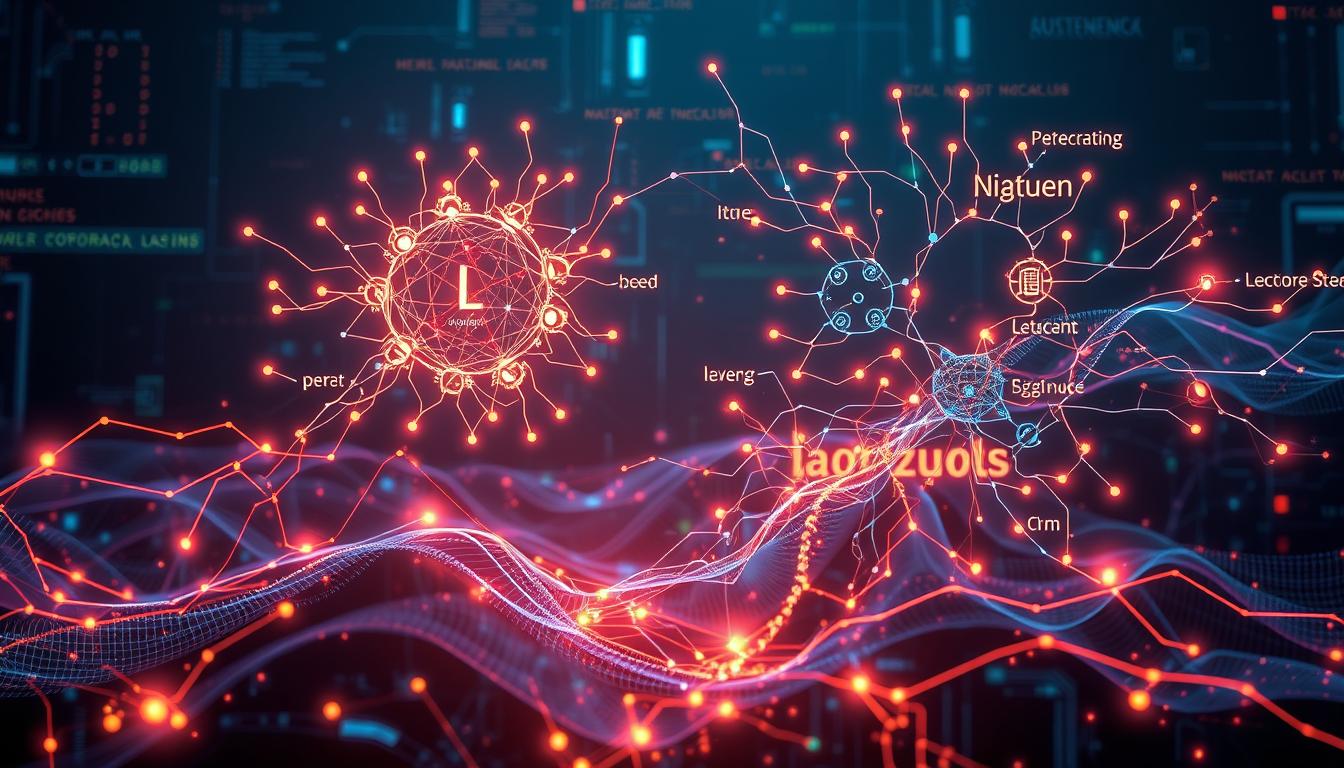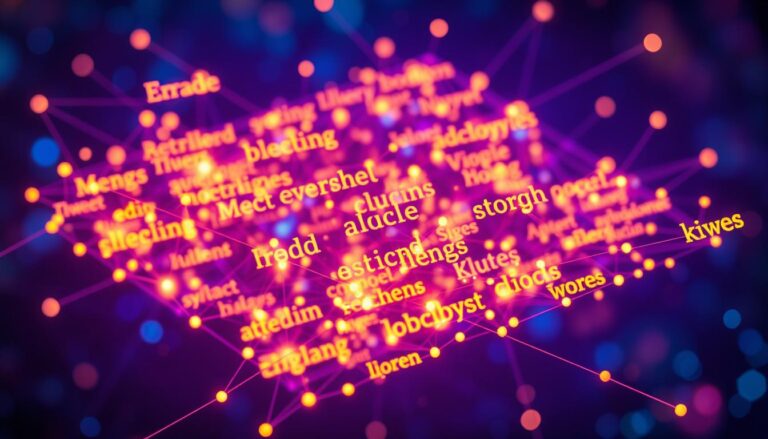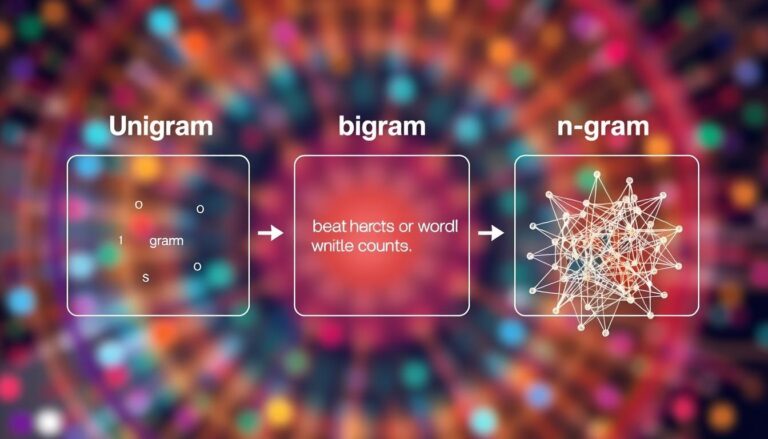How Does Machine Translation Work Using NLP?
Machine translation is a big step forward in technology. It uses Natural Language Processing (NLP) to translate text or speech from one language to another. NLP is a part of artificial intelligence that helps computers understand and work with human languages.
This technology combines different areas like computational linguistics and machine learning. It lets computers translate text and speech well.
The journey of machine translation has been amazing. It started with early systems that weren’t very good. Now, we have better systems that use neural networks.
These new systems have made translations better and faster. They help people talk and work together across languages.
As machine translation gets better, using NLP is more important than ever. Artificial intelligence helps make translations more accurate and meaningful. This is great for many areas, like business, education, and more.
Understanding Machine Translation Fundamentals
Machine translation is a part of computer science that deals with translating text from one language to another. It uses Natural Language Understanding, Language Models, and machine translation components to do this. This way, it can change content from one language to another accurately.
Definition and Core Components
Machine translation systems use several important steps. These include breaking down text into words or units, reducing words to their simplest form, and identifying the roles of words in sentences. These steps help in understanding and translating text.
Evolution of Machine Translation Technology
Machine translation has grown a lot over time. It started with rule-based systems and moved to statistical and neural models. Early systems used rules to translate, while later ones used big data and deep learning for better results.
Key Benefits of Machine Translation
Machine translation brings many advantages. It helps in talking across borders, saves money, makes things more accessible, and speeds up translation work. These benefits make it very useful for many things, like making digital content available in different languages.
| Benefit | Description |
|---|---|
| Cross-Border Communication | Machine translation helps bridge language barriers, enabling seamless communication and collaboration across international borders. |
| Cost Savings | Automating the translation process can significantly reduce the costs associated with human translation services, especially for large-scale projects. |
| Increased Accessibility | Machine translation enhances access to information and content for individuals who speak different languages, promoting global connectivity and inclusion. |
| Efficient Large-Scale Translations | Machine translation can handle the translation of large volumes of text, such as websites or business documents, with speed and accuracy that would be difficult to match with manual translation. |

Natural Language Processing: The Engine Behind Machine Translation
Natural Language Processing (NLP) is key to machine translation’s growth. It lets computers understand and analyze human language well. NLP uses text mining, sentiment analysis, and named entity recognition to grasp language’s subtleties. This makes machine translation smooth and effective.
NLP breaks language into its basic parts, like words and their meanings. It does this through tokenization, lemmatization, and part-of-speech tagging. Sentiment analysis adds emotional context. With machine learning, these steps lead to better translations that get even better over time.
| NLP Technique | Description |
|---|---|
| Text Mining | Extracting valuable information and insights from unstructured text data. |
| Sentiment Analysis | Identifying and classifying the emotional tone or sentiment expressed in text. |
| Named Entity Recognition | Identifying and categorizing key entities such as names, locations, and organizations within text. |
NLP keeps improving, making machine translation more accurate and efficient. This is why it’s used in many fields, like e-commerce and education. NLP helps break language barriers, changing how we communicate and share information.

Essential Machine Translation Approaches
Machine Translation (MT) has grown a lot in recent years. Advances in natural language processing (NLP) and language models have led to new translation methods. These include rule-based systems, statistical methods, and neural machine translation. Each approach has improved how we translate text, making it more accurate and natural-sounding.
Rule-Based Translation Systems
Rule-based machine translation (RBMT) uses linguistic rules and dictionaries. It involves direct translation, interlingual translation, or transfer-based approaches. These methods use grammatical and lexical information to translate text from one language to another.
Statistical Machine Translation Methods
Statistical machine translation (SMT) uses machine learning to analyze large amounts of human translations. It relies on statistical models and probabilities to create more accurate and fluent translations. But, SMT faces challenges like high corpus creation costs and difficulties in capturing idiomatic expressions.
Neural Machine Translation Technology
Neural machine translation (NMT) is the latest breakthrough. It uses deep learning neural networks to process sentences and understand complex language structures. NMT models are trained on huge bilingual text datasets. This allows them to learn patterns and produce translations that are natural, coherent, and contextually appropriate.
Hybrid systems combine rule-based and statistical methods. They use the strengths of each approach to improve machine translation effectiveness.
Real-World Applications and Implementation
Machine translation is now a big part of our digital lives. It helps with communication, website and software localization, and more. It’s used in virtual assistants, search engines, and even in writing and content moderation. This is all thanks to Chatbots, Conversational AI, and Text Generation.
Big tech companies like Google, Microsoft, and IBM are working hard on machine translation. They use the latest in natural language processing (NLP) to get better translations. But, humans still play a big role, especially when it comes to understanding culture and language nuances.
Machine translation has many uses. Virtual assistants like Siri and Google Assistant use NLP to understand voice commands. Search engines use it to guess what you’re looking for. Even email services use it to sort messages, making our work easier.
It’s not just for customers. Machine translation also helps businesses. It’s used for analyzing feelings in text, checking grammar, and summarizing documents. This makes work faster and helps find important information in data.
As machine translation gets better, companies need to choose the right tools. They look for solutions that are easy to use, can grow with their needs, and are affordable. SaaS options are becoming popular because they are easy to use and don’t require a lot of setup.
In the future, machine translation will be even more important for businesses. It will make work easier, help people communicate better, and make it simpler to work with people all over the world. The future of machine translation looks bright, with more innovation and use in our daily lives.
Conclusion
Machine translation, powered by Natural Language Processing (NLP) and Artificial Intelligence (AI), has made big steps forward. It helps break down language barriers. But, it works best when combined with human expertise for the best results.
The future of machine translation looks bright. It will get even better with more AI and deep learning. This could lead to more accurate and context-aware translations in many languages and areas.
NLP-driven machine translation has changed how we communicate worldwide. Innovations like Google Neural Machine Translation (GNMT) and speech recognition have opened up new ways to talk across languages. As these technologies get better, businesses can use them to improve customer service and make smarter decisions.
But, machine translation isn’t perfect yet. It has its limits, like the flaws in machine learning models and the need for lots of training data. Still, using NLP and AI in software can give businesses an edge. It can help them serve customers faster and make better risk assessments.
As Natural Language Processing keeps getting better, machine translation’s potential grows. We can look forward to more accurate and context-aware translations in the future.






